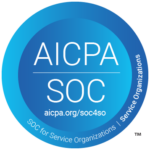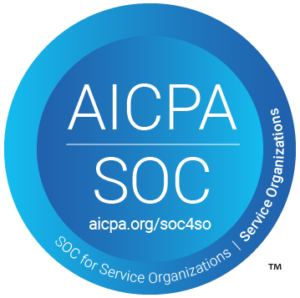Portfolio reporting gives MSPs a powerful way to understand which clients are fueling profitability and which are quietly draining it. Instead of viewing your business as a whole, each client or agreement is treated as its own performance unit. This allows you to rank them by efficiency, spotlight your biggest positive and negative outliers, and apply targeted fixes that improve margins—without overhauling the entire business.
At MSPCFO, this approach introduces a few financial concepts that may be new to some MSPs. Here’s a breakdown of the five most important ones.
1. Shadow Billable
Shadow Billable measures the value of labor as if it were billed hourly, even under fixed-fee agreements. By applying your team members’ billing rates to every time entry, you see the true value of the work performed.
For fixed-fee managed services agreements, this helps you understand whether the labor being delivered matches the value you expect. You can also apply Shadow Billable across all agreements to measure individual member performance.
Why it matters: Shadow Billable helps reveal whether the effort you’re investing aligns with the revenue you’re collecting.
2. Labor Revenue
Labor Revenue represents the revenue left after you strip out product revenue in a fixed-fee agreement (e.g., RMM tools, firewall, or email filtering). What remains is the portion of revenue that covers labor.
This figure is critical because, in many fixed-fee agreements, what you charge for labor is fixed but what you deliver is variable. MSPCFO uses Labor Revenue to compare this to the value of the work that you delivered, which can vary from month-to-month.
Why it matters: By isolating Labor Revenue, you know exactly how much income is available to cover the team’s work.
3. Efficiency
Efficiency is a ratio that compares the value of work performed (Shadow Billable) against the revenue generated (Labor Revenue).
Within MSPCFO, Efficiency always refers to this relationship: Labor Revenue ÷ Shadow Billable. It shows whether your agreements are priced appropriately relative to the value of work delivered.
Why it matters: Efficiency makes it clear whether client agreements are underpriced, oversized, or right on target. More work under a Fixed Fee Agreement does not lead to more revenue.
Protecting High-Profit Clients from Churn
Your most profitable clients—the ones with standardized stacks and smooth operations—sometimes pose the biggest risk. They might not “see” your value because they rarely need help, making them wonder why they’re paying you.
In fact, 13% of revenue across MSPCFO users is at risk from “flight risk” clients. MSPCFO identifies these clients so you can act—whether it’s proactive QBRs, lunch-and-learns, or executive relationship-building. Retaining just one of these clients could easily cover years of MSPCFO subscription fees.
Example:
An MSP with $200,000 in MRR has about $26,000/month at risk in their top 5 accounts. Just one of those clients could represent $5,200/month in revenue at risk. That scales up as you grow.
4. W2 Multiple
The W2 Multiple is a KPI that measures how effectively your engineers generate revenue compared to their cost. In the Managed Service world, more work no longer equals more revenue. A widely used benchmark, suggested by Rex Frank of Pax8 Academy, is that engineers should produce three times their pay. For example, if an engineer costs $35/hour, they should generate about $105/hour in value.
This is simple to measure with time-and-materials billing but becomes more nuanced in managed services where revenue is not tied directly to hours worked. MSPCFO reporting helps you measure this productivity through reports like Member Billing by Month.
Why it matters: W2 Multiple highlights whether your team is delivering enough value to justify its cost.
5. Contribution and Contribution/Hour
Contribution is the margin left after subtracting direct costs from direct revenues for a client or agreement. Contribution considers all the different ways you earn revenue. Unlike gross margin, it excludes overhead and shared costs.
Contribution/Hour takes this one step further by dividing total contribution by the hours delivered. This shows how much margin each hour of client time contributes, making it a gold standard metric for profitability.
What makes Contribution and Contribution/Hour a great reflection on the company’s profitability is that it is indifferent to how the MSP makes it money – whether it’s earned by servicing an agreement, working on a project or reselling products.
Why it matters: Contribution and Contribution/Hour reveal the true return on your time investment—showing which clients or services are strengthening your margins, and which may be loss leaders only sustainable when paired with more profitable work.
Bringing It All Together
Shadow Billable, Labor Revenue, Efficiency, W2 Multiple, and Contribution and Contribution/Hour are more than financial terms—they’re practical tools for transforming how you evaluate clients. By understanding these concepts, MSP leaders can make smarter decisions, identify opportunities, and strengthen profitability across their entire portfolio.
Portfolio reporting isn’t just about tracking numbers; it’s about creating visibility into where your business thrives and where it struggles—so you can take precise action to grow margins and improve results.
About MSPCFO
Winner of both the Partner Innovation and Partner Advocate awards at IT Nation Evolve 2022, MSPCFO is a business intelligence platform designed to solve the unique profitability and productivity challenges managed services providers face. Since the application’s introduction in 2014, MSPCFO has helped thousands of MSPs and TSPs in the United States, Canada, APAC, and Europe identify improvement targets that directly boost their bottom line. Founder and CEO Larry Cobrin’s consulting, investment banking, private equity and product management experience coalesced in his development of the MSPCFO software and business model.
Follow MSPCFO
Want to Improve Your Bottom Line?
Schedule Your Personalized Demo





